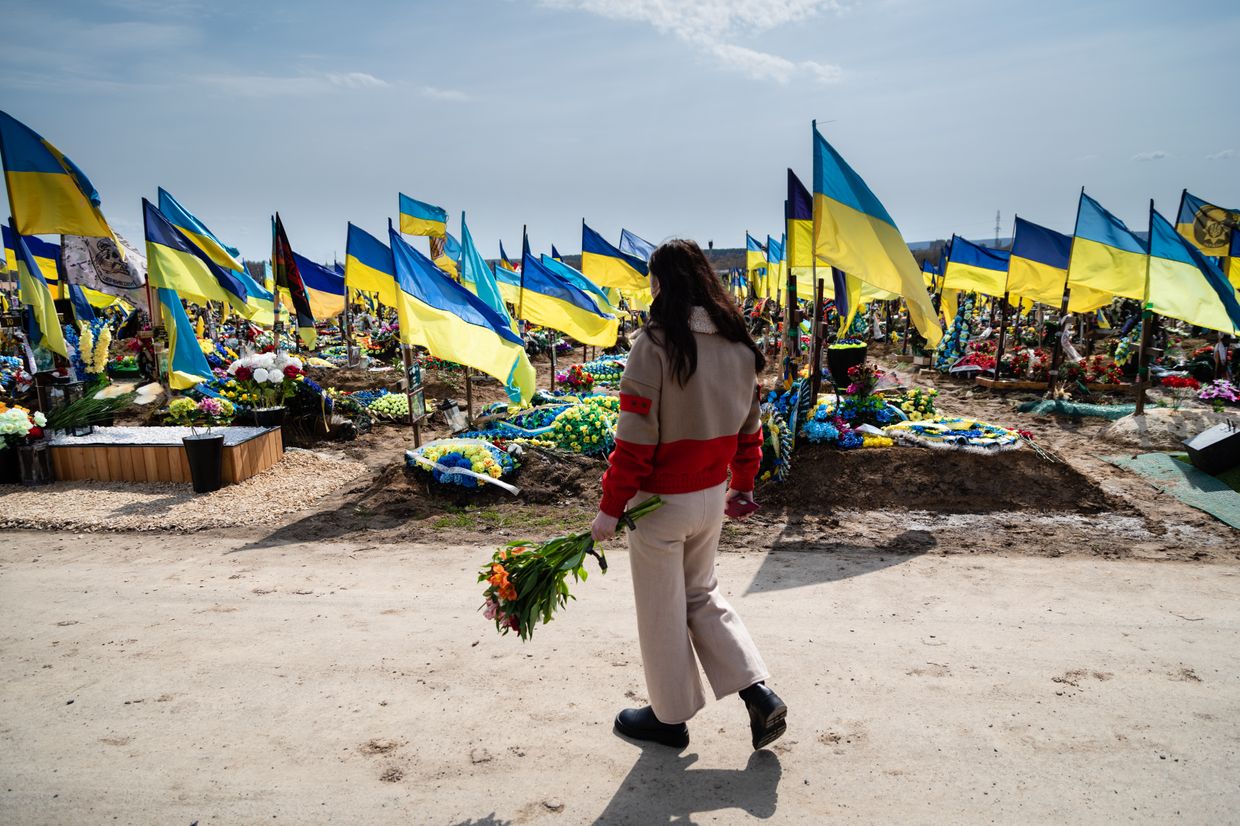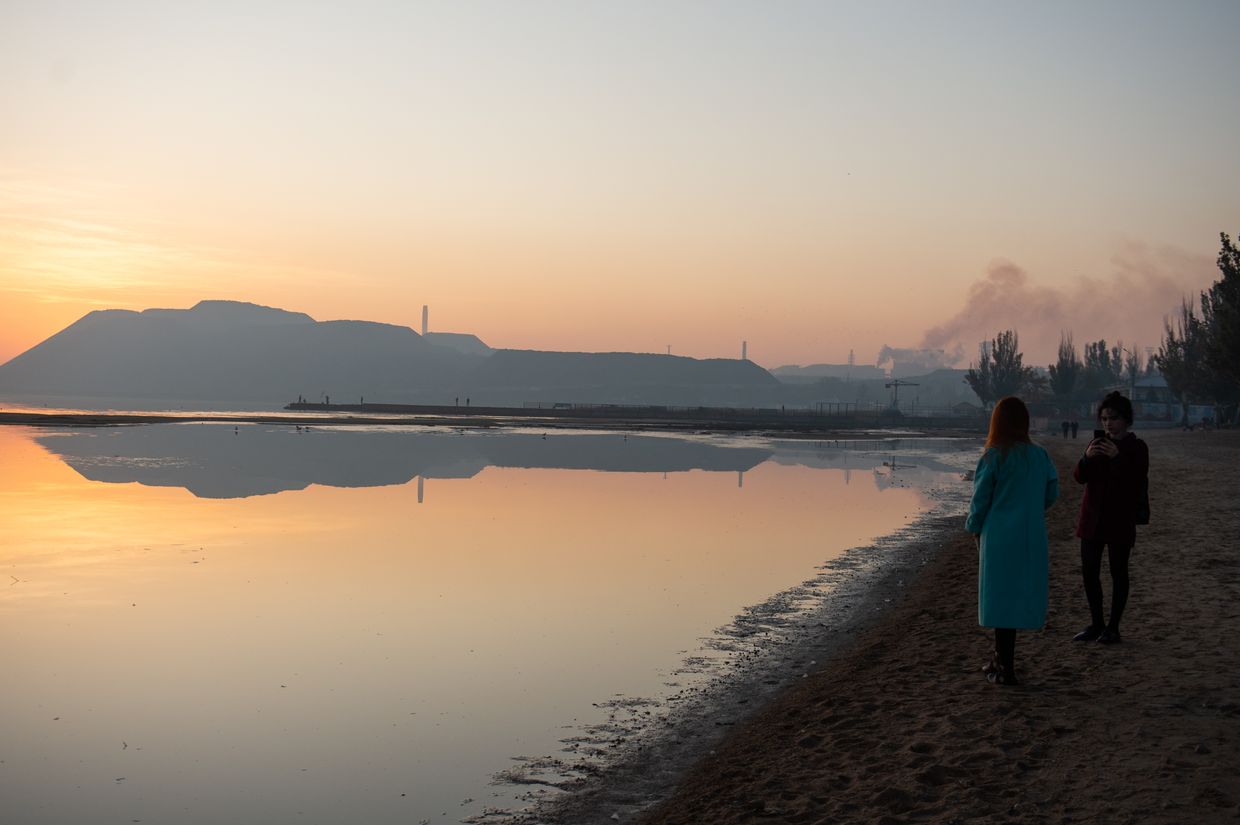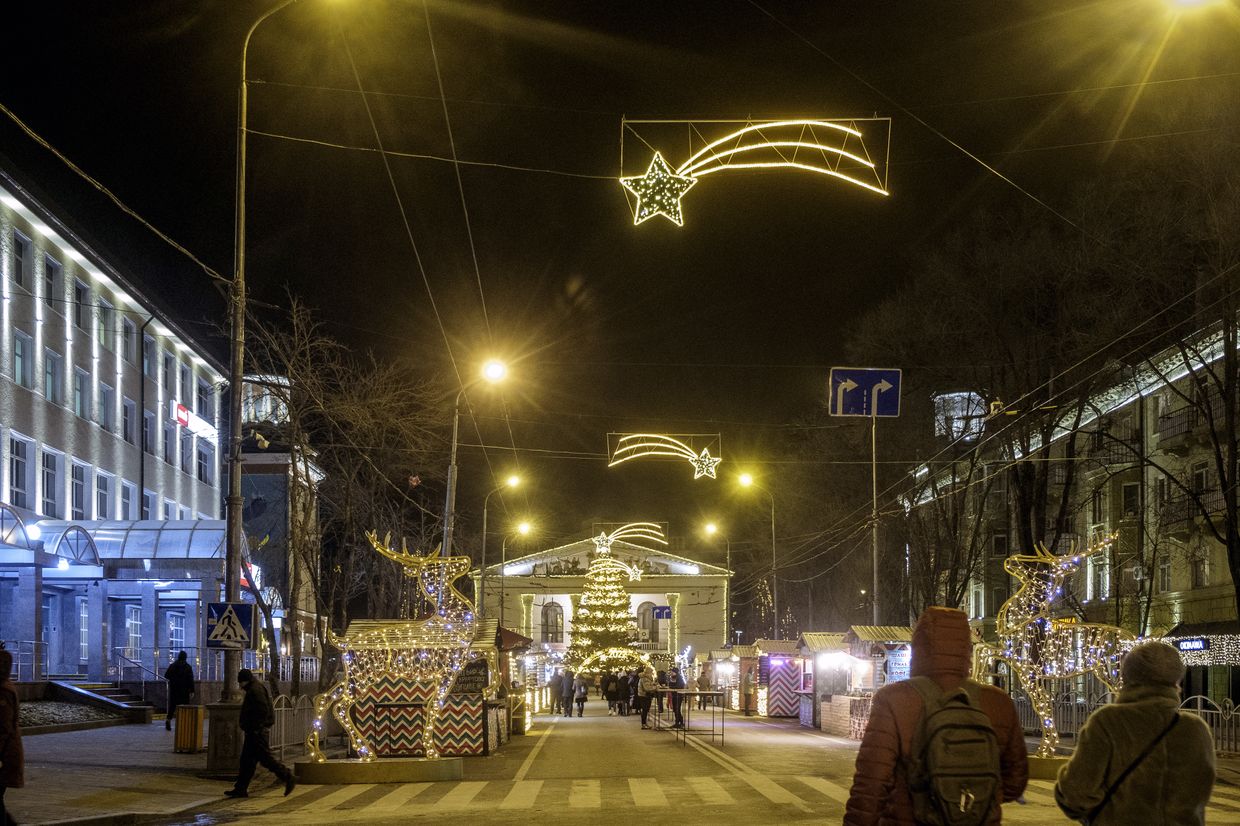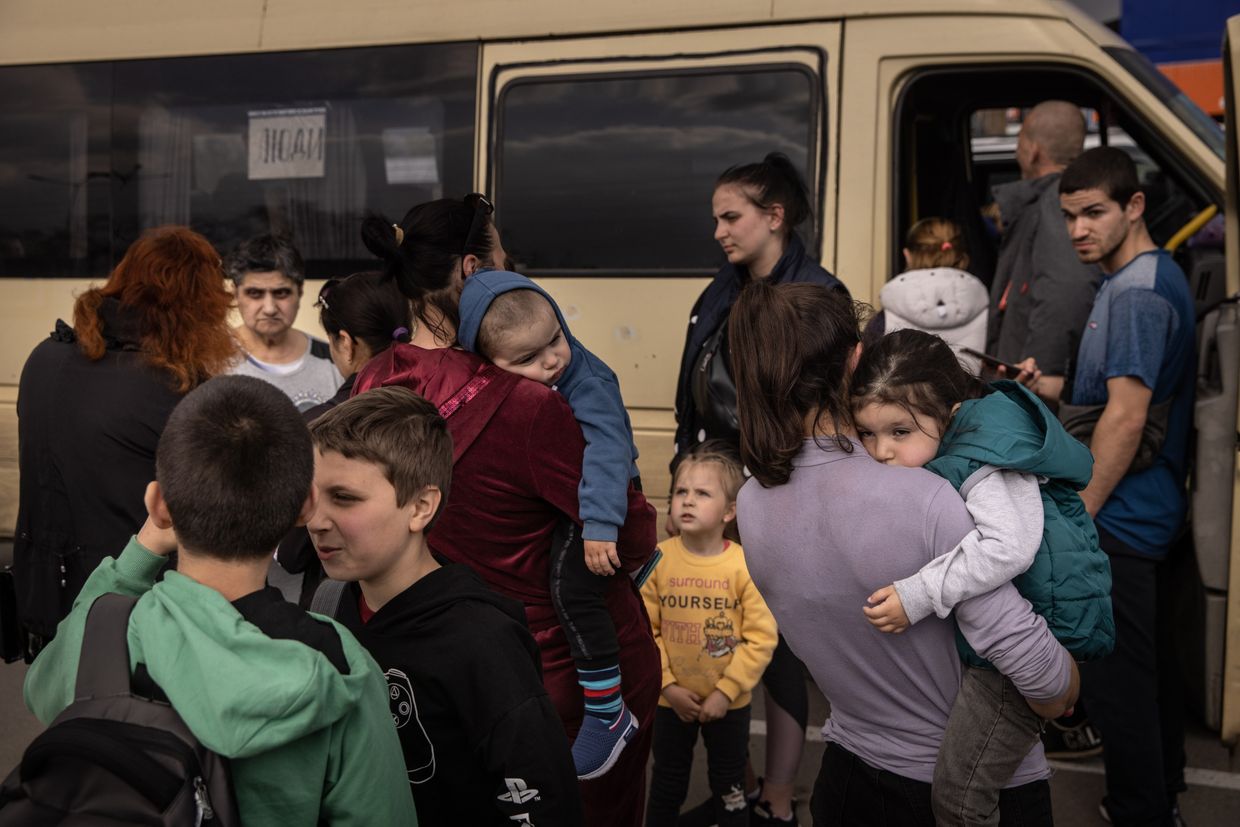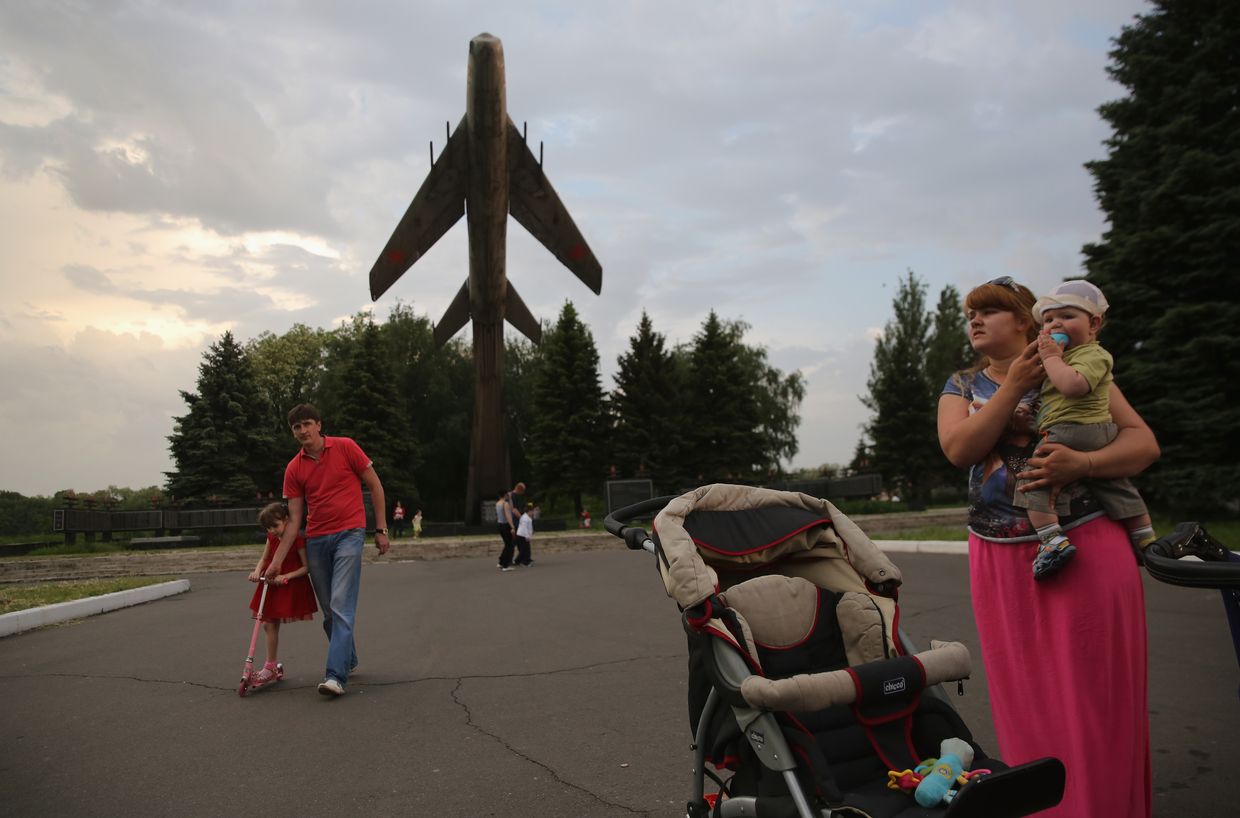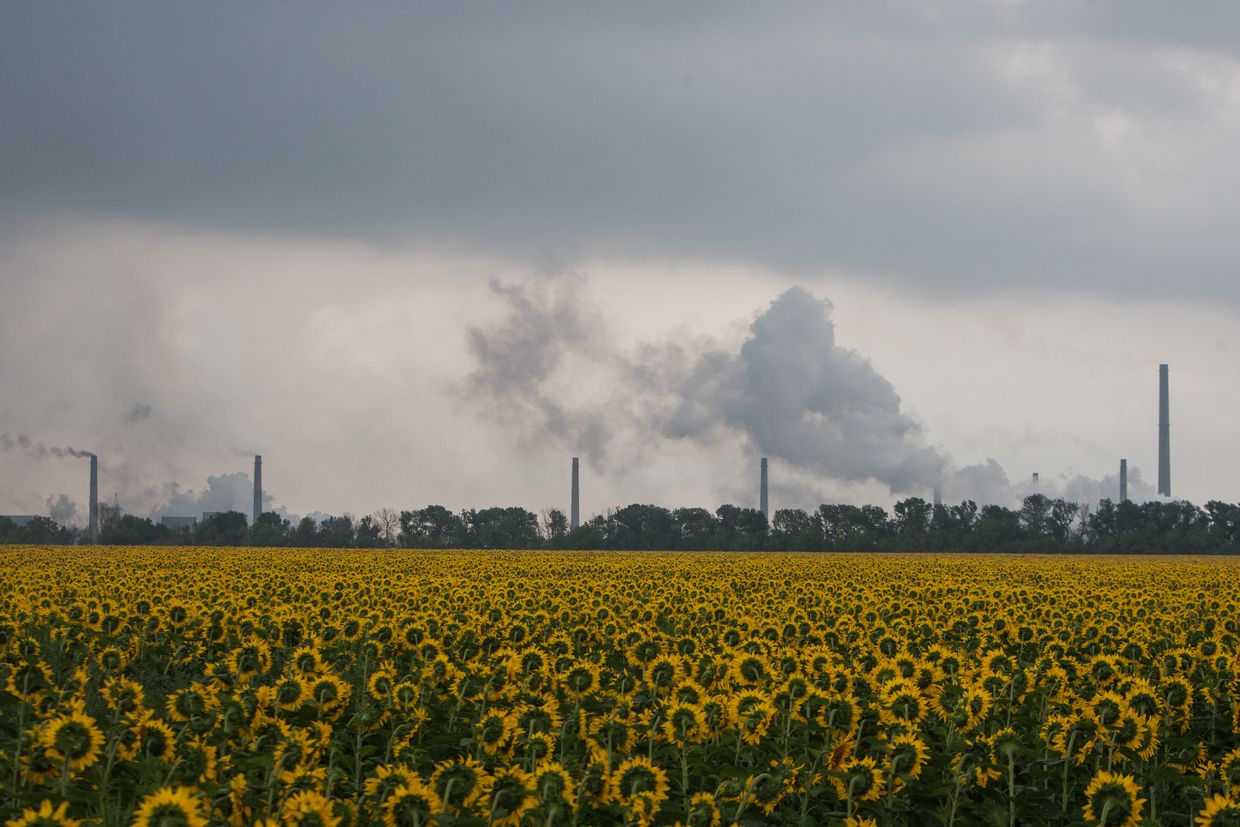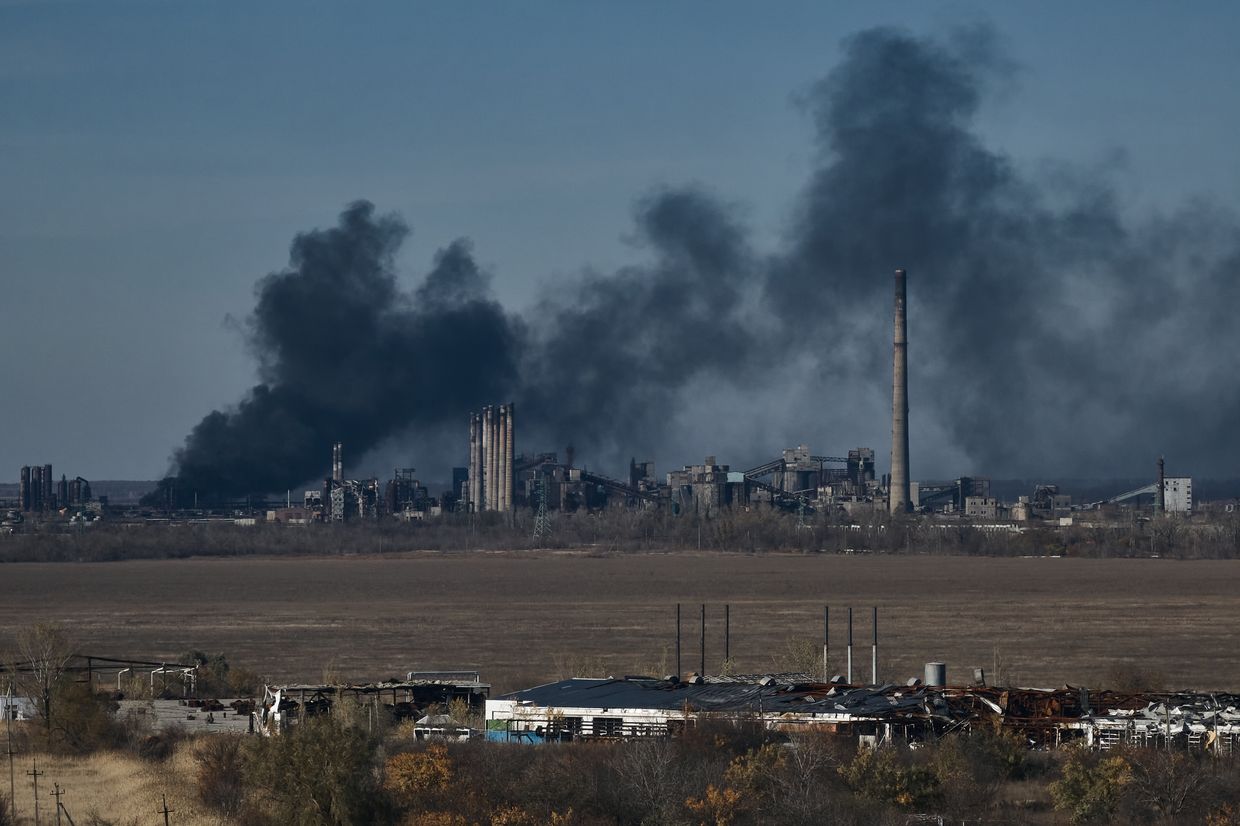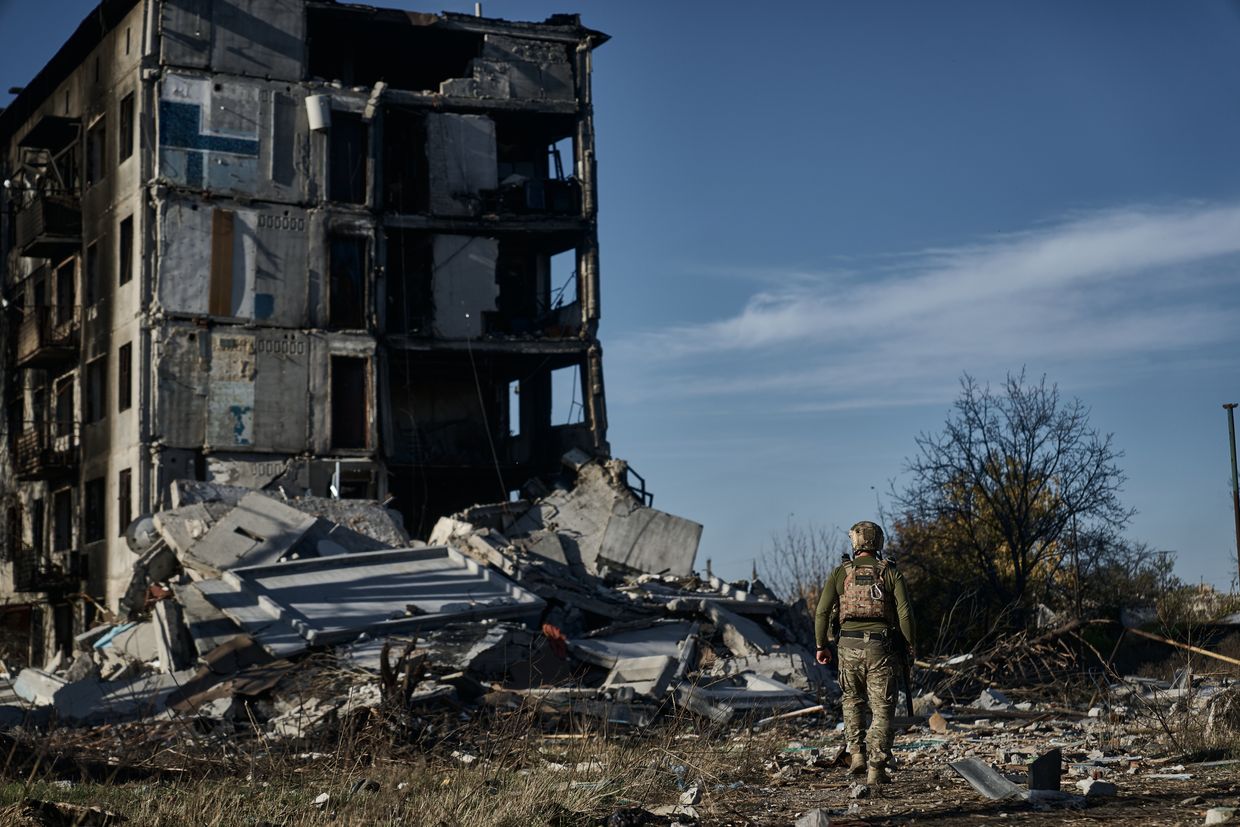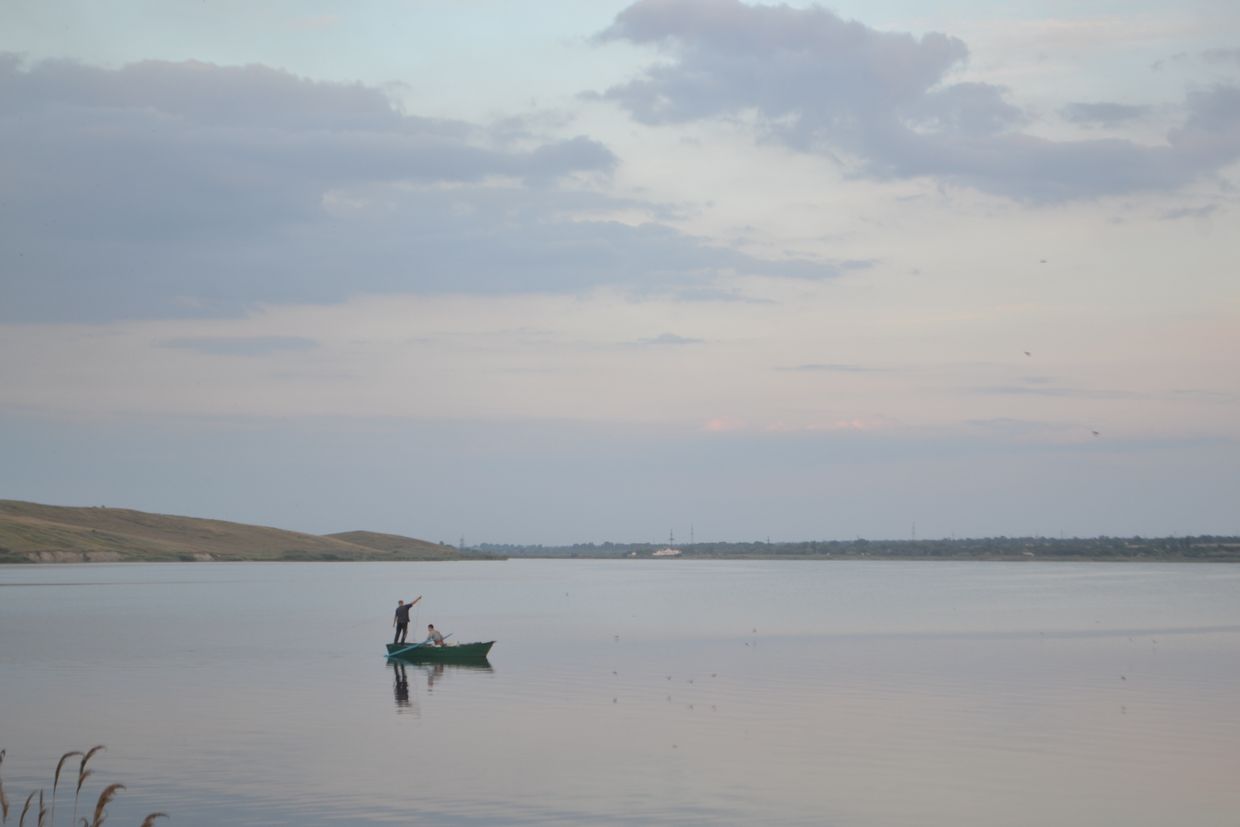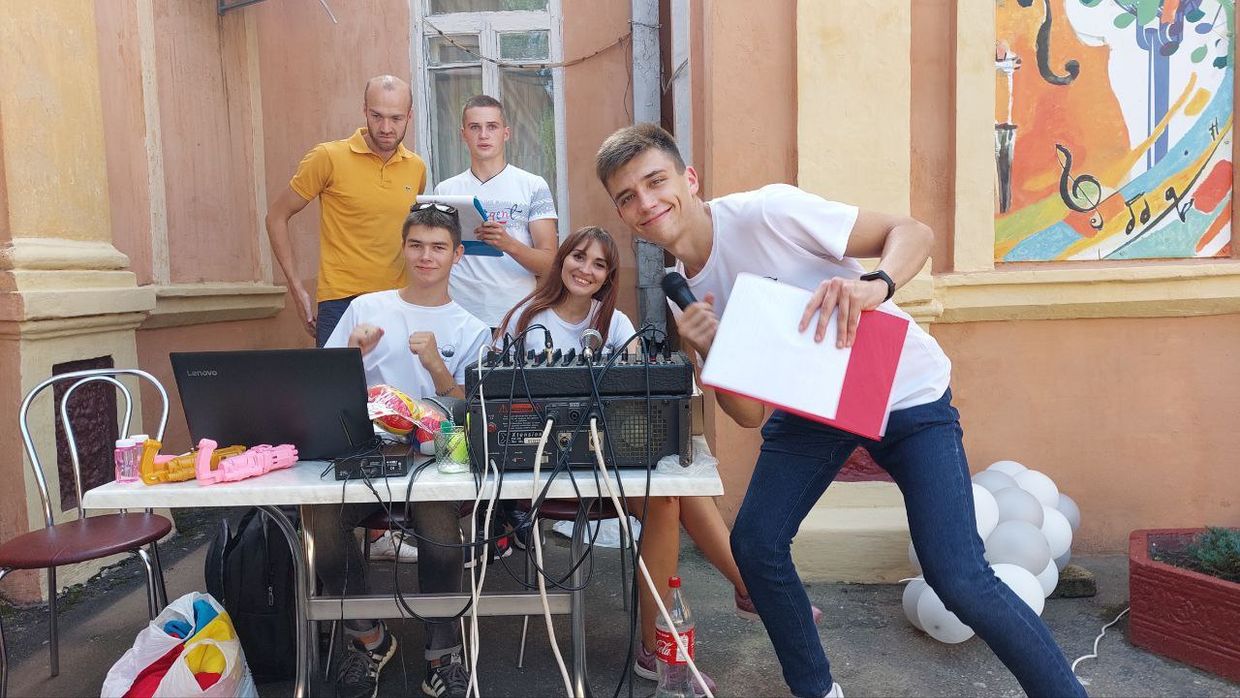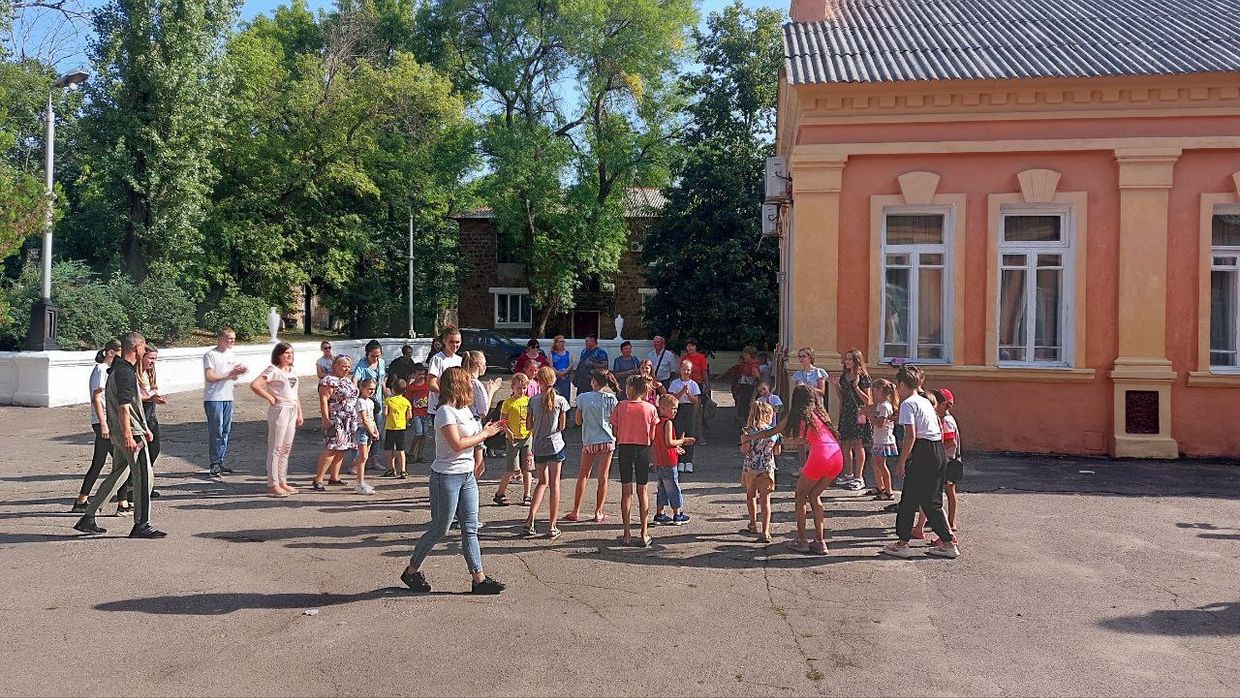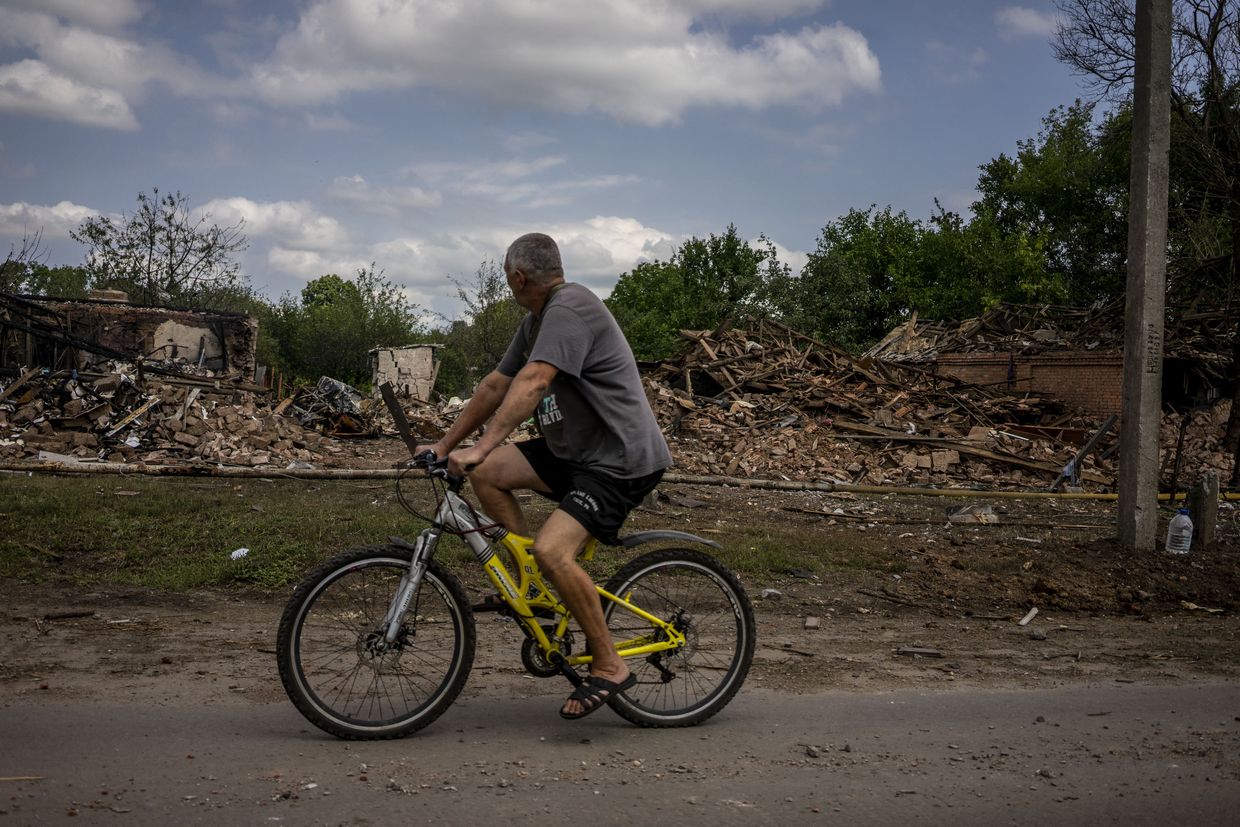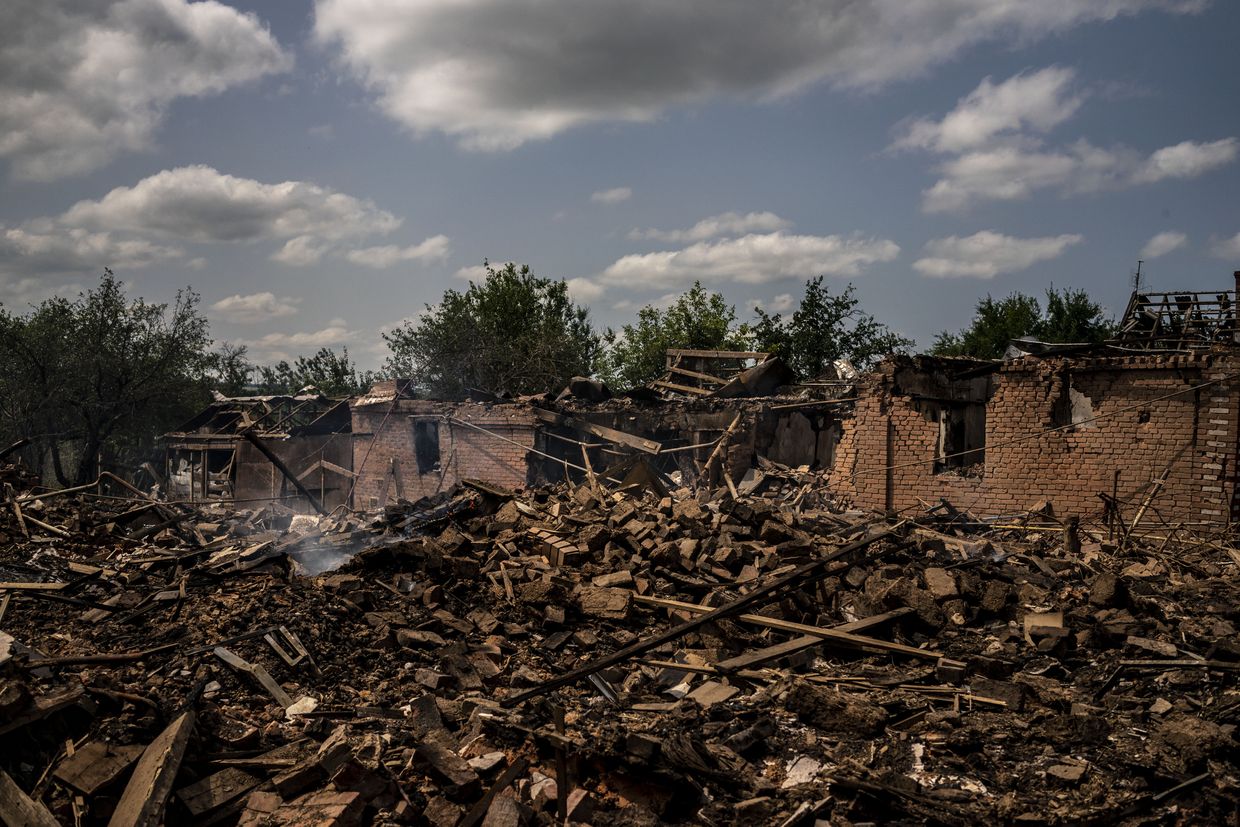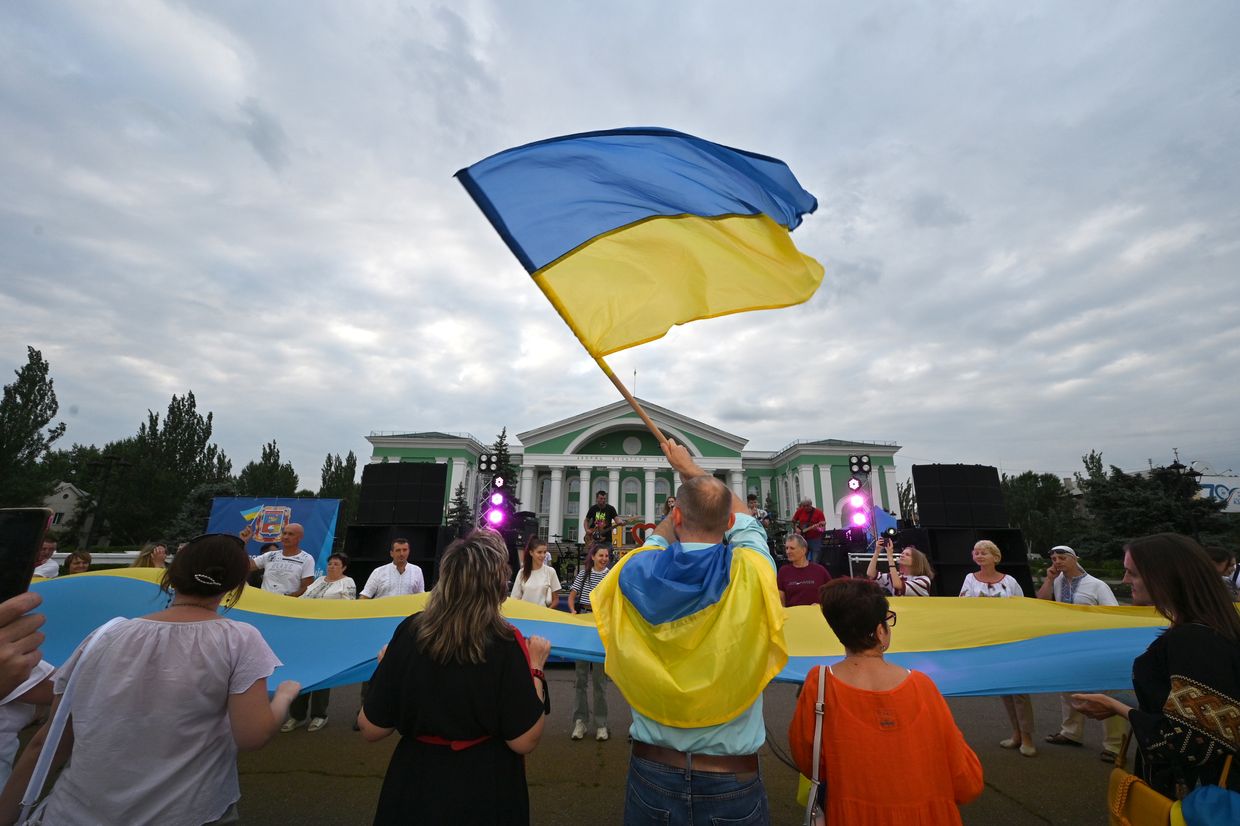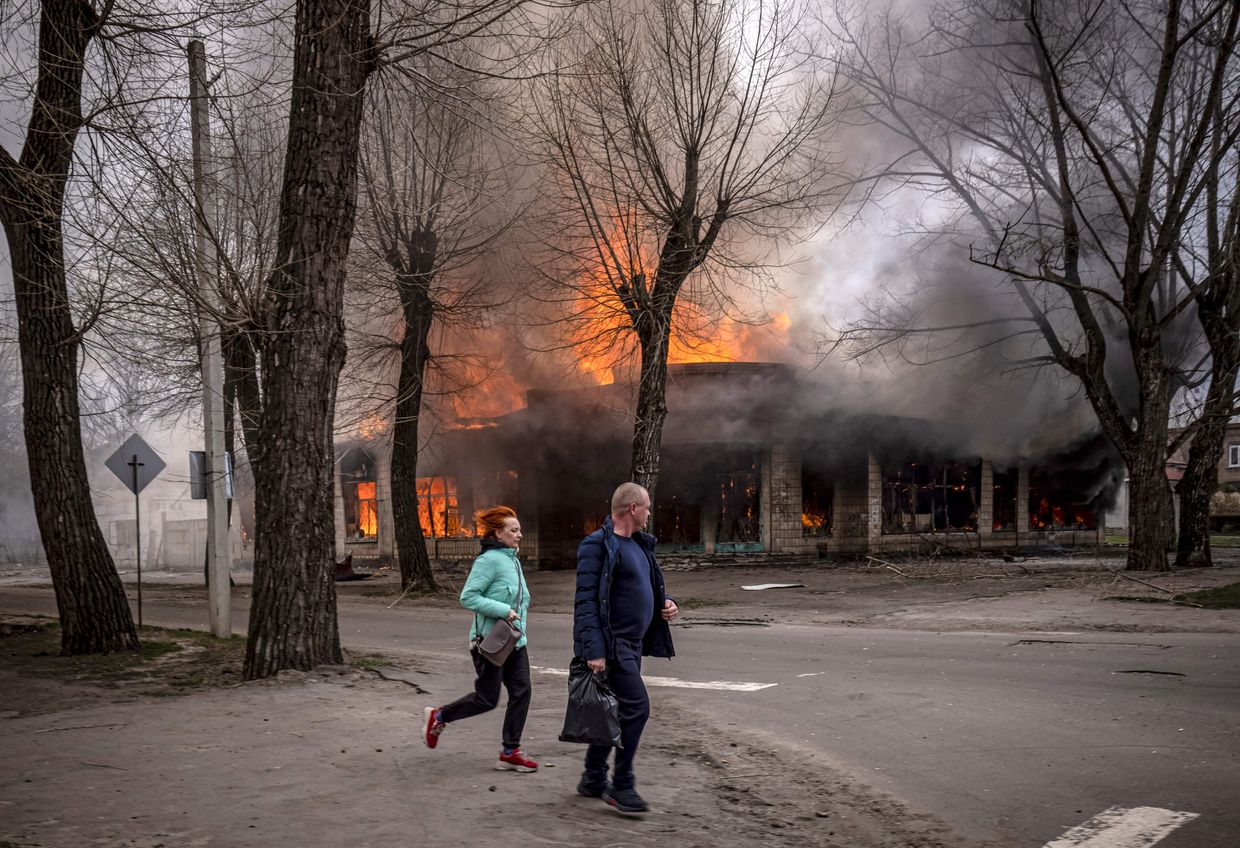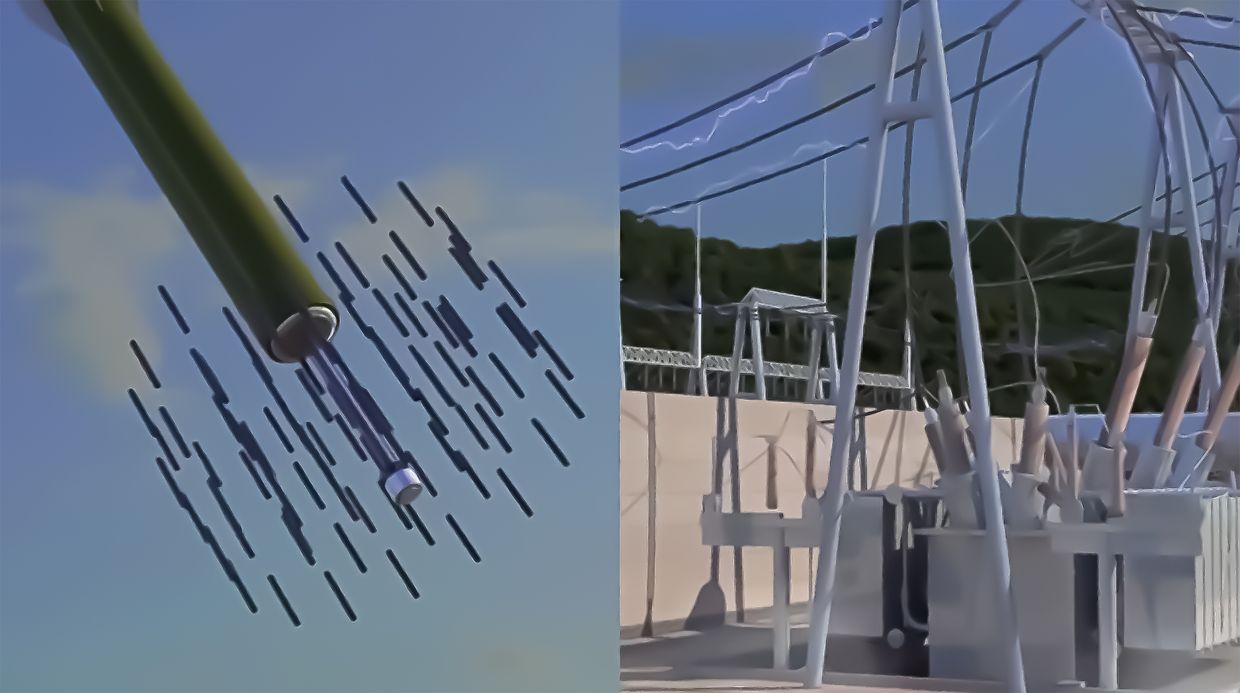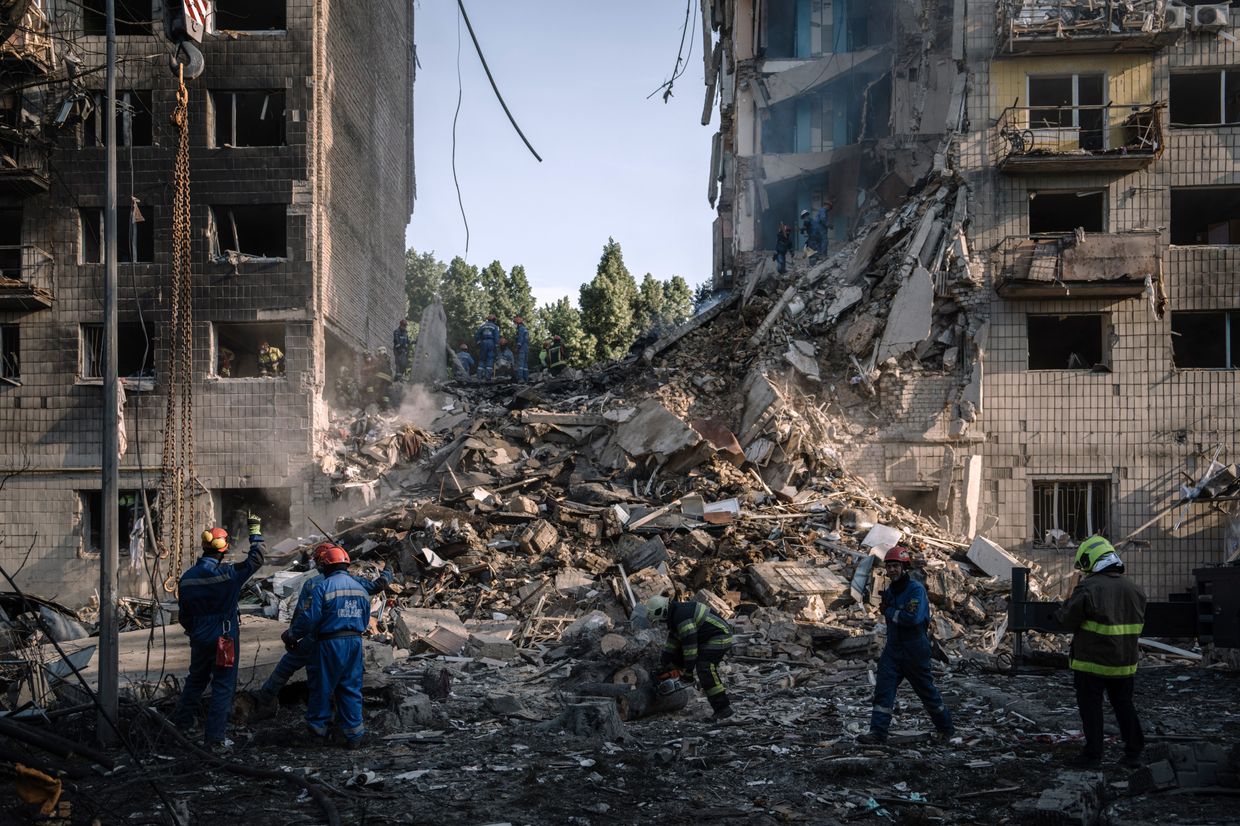Russia’s now-10-year war against Ukraine has affected every inch of the country, but no other region has taken the brunt of Russian aggression like Ukraine's eastern Donbas region, comprised of Donetsk and Luhansk oblasts.
While the initial eight years of Russia's invasion only affected a handful of eastern Ukrainian cities, towns, and villages, some 200 have now been heavily impacted by Russia’s full-scale invasion of 2022, according to Ukrainian authorities.
At least 35 settlements continue to experience active combat, while others have ceased to exist almost entirely, such as Volnovakha, Bakhmut, or Marinka in Donetsk Oblast.

“The town of Marinka no longer exists,” then-Commander-in-Chief Valerii Zalyzhnyi told a news conference in late December 2023.
Each damaged or destroyed town and city carries with it a human toll. Thousands have been killed and over a million have been displaced from the country’s eastern regions since 2014.
Between 2014 and 2021, Russia’s war killed 3,400 civilians and injured 9,000, according to the UN. The number of civilian casualties almost tripled when Russia unleashed its full-scale invasion, with 9,700 dead and 17,750 wounded.
Half of the casualties after 2022 were recorded in Donetsk and Luhansk oblasts.
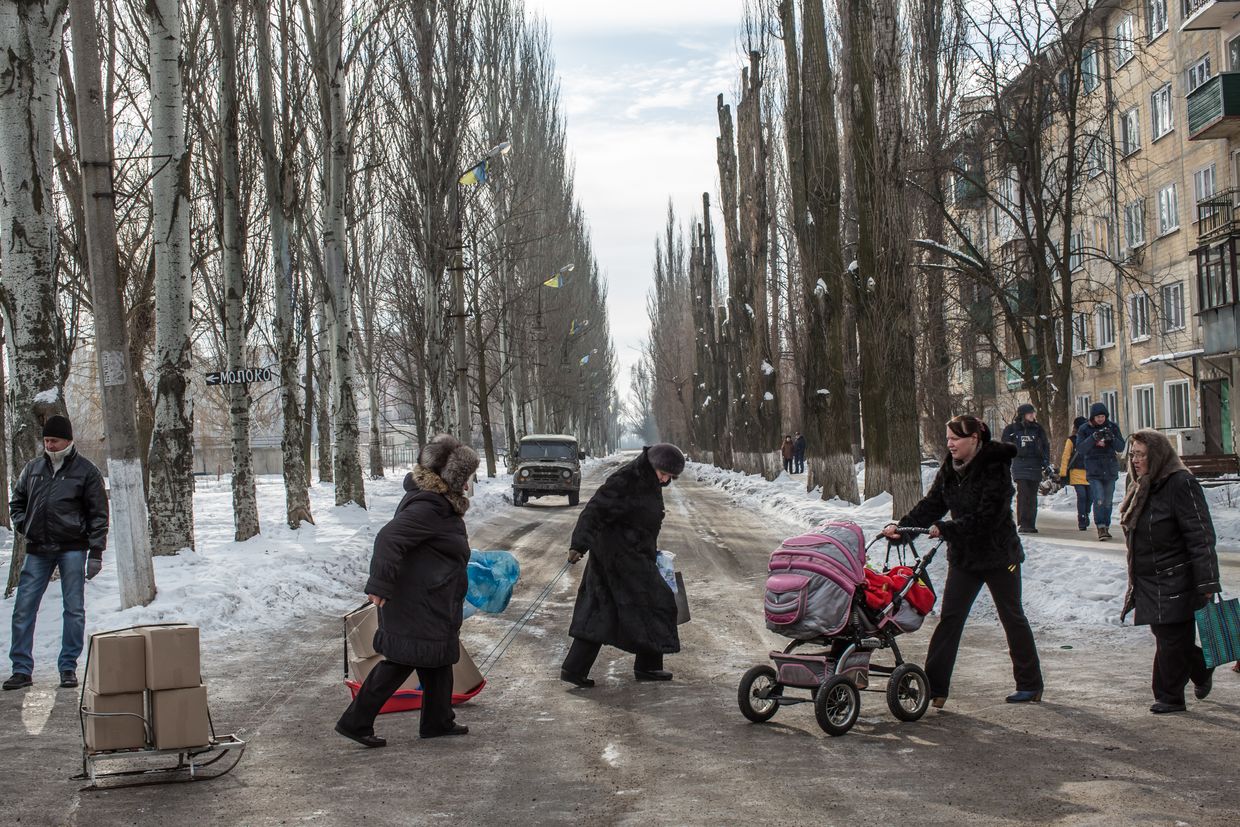
Ukrainian authorities say, however, that the civilian casualties in occupied territories are impossible to count. Ukraine has said that in Mariupol alone, at least 11,000 civilians could have been killed during Russia’s months-long siege between February and May 2022.
It’s unclear if these places will ever be rebuilt. Even if they are, they changed forever.
The Kyiv Independent has compiled a series of photographs showcasing the stark contrast between what these places looked like before and after the full-scale invasion, alongside locals' memories of cities destroyed or on the brink of destruction.
Mariupol, Donetsk Oblast
When Kateryna Kovalchuk stole a book on Mariupol's old architecture from the school library, little did she know that 15 years later, it would serve as her sole connection to her hometown.
Russia’s months-long siege of Mariupol devastated the strategic port city before its forces seized control of it in May 2022. The UN estimates that at least 90% of the city’s residential buildings were damaged or destroyed by the onslaught.
Kovalchuk flips through the book to show the Kyiv Independent her favorite building, the House with Lions. The Art Nouveau mansion built at the turn of the 20th century was impossible to miss among the austere Soviet buildings around it.
She recalls taking walks before the full-scale invasion, saying that she liked to imagine what the city must have looked like 100 years ago.
“I still imagine being there,” Kovalchuk told the Kyiv Independent.
All of Mariupol’s main streets lead to a city garden overlooking the Azov Sea, a popular spot with locals.
From the garden, one also had a view of the gigantic Azovstal steel plant, the Ukrainian military’s last stronghold in Mariupol that is now synonymous with Ukraine’s defense of the city in the early days of the full-scale invasion.
Russia’s brutal siege of Mariupol, once home to 500,000 people, heavily damaged the Azovstal plant, Kovalchuk’s home, and the House with Lions.
Kovalchuk said she doesn't recognize the footage of the hometown she used to explore.
"What scares me the most is that (sometimes) I can't even recognize any landmarks," she said.
Andrii Kiurdzhiev also hung out at the observation deck in the city garden. He loved watching people calmly staring at the horizon during the eight years he lived in Mariupol.
Two years after fleeing, he is still attached to Mariupol’s seaside.
“I can’t imagine how it is possible to live in a city without the sea,” Kiurdzhiev told the Kyiv Independent.
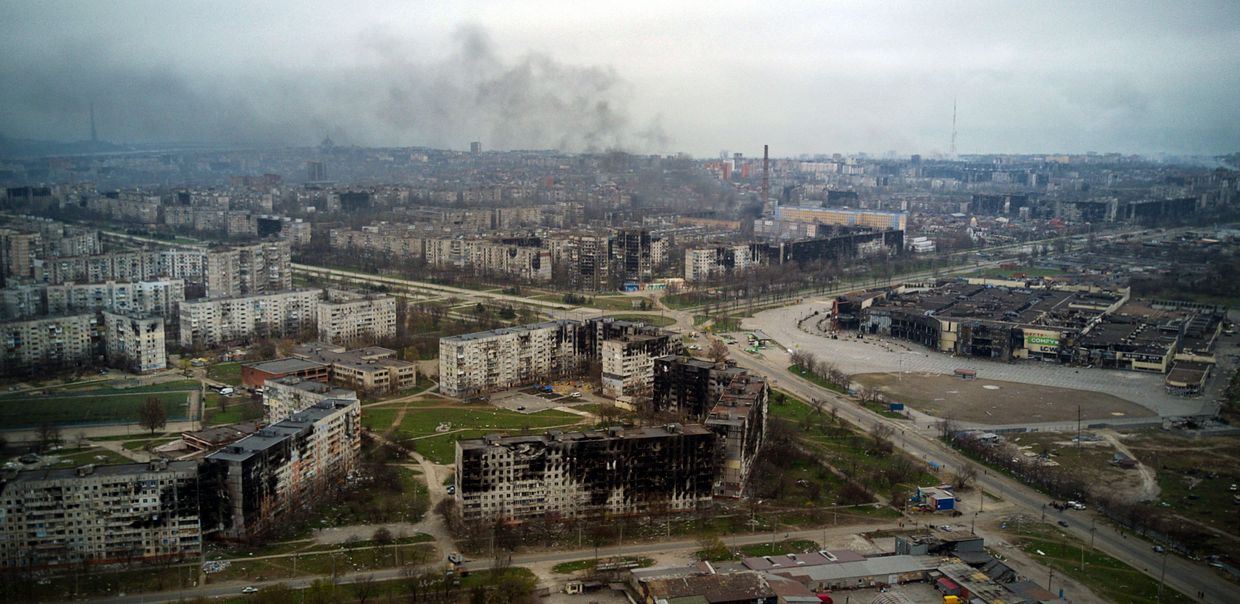
Avdiivka, Donetsk Oblast
Andrii Kiurdzhiev fled his native Avdiivka in June 2014 after Kremlin-backed proxies captured the town and a string of others in April 2014.
To escape the fighting around Avdiivka, he moved 100 kilometers south to the city of Mariupol, which had recently been liberated by Ukrainian forces in June 2014 after a month under Russian proxy control.
Ukraine managed to retake both places in the summer of 2014. But as of the start of Russia’s full-scale invasion, Russia has captured both cities, practically razing them to the ground in the process.
After months of intense battles, Ukrainian troops were forced to withdraw from Avdiivka in late February 2023 as it became increasingly clear that Russian forces were close to encircling them.
Once home to almost 30,000 people, the city has been flattened to something resembling a large plot of land scattered with the occasional carcass of a destroyed building.
The coke plant — central to the town’s life and the Ukrainian military’s last stronghold in the city — has been taken over by Russian troops.
Kiurdzhiev worked at the plant maintaining one of its turbines. After shifts, he said he would grab his guitar and ride his bicycle to a nearby quarry.
The apartment building where Kiurdzhiev used to live collapsed after it was struck in a Russian attack in October 2023. After seeing footage of the rubble that used to be his home, Kiurdzhiev said he just hoped his bicycle was still in the basement.
Remembering the town, he says it felt like a “dream suburban city compared to American standards, just without the white picket fences.”
After losing two homes to Russia’s 10-year war, Kiurdzhiev says he’s emotionally drained.
"I have no home, nothing. Now I need to survive and search for a new place to call home rather than lamenting the loss of the old one," Kiurdzhiev told the Kyiv Independent from Lviv, where he lives now.
Kurakhove, Donetsk Oblast
West of Avdiivka, daily Russian missile attacks constantly hit the small but strategic town of Kurakhove in Donetsk Oblast.
Before the war, the predominantly industrial Kurakhove, located on the banks of a large water reservoir, had little to offer its residents. Iryna Ivanchenko and her friends spent most of their time outdoors in nature.
She says they used to go to the bank opposite their homes and walk through the bushes to a hilltop. They’d watch the sunset and stare up at the sky full of stars for hours, she remembers.
Today, civilians can't reach this high ground as it's considered militarily strategic.
"Many places related to my childhood have been destroyed, including the House of Culture where I used to dance, my kindergarten, and school," Ivanchenko told the Kyiv Independent.
“I'm afraid of losing my home and never being able to return because the Russians are razing cities in Donbas to the ground,” she said.
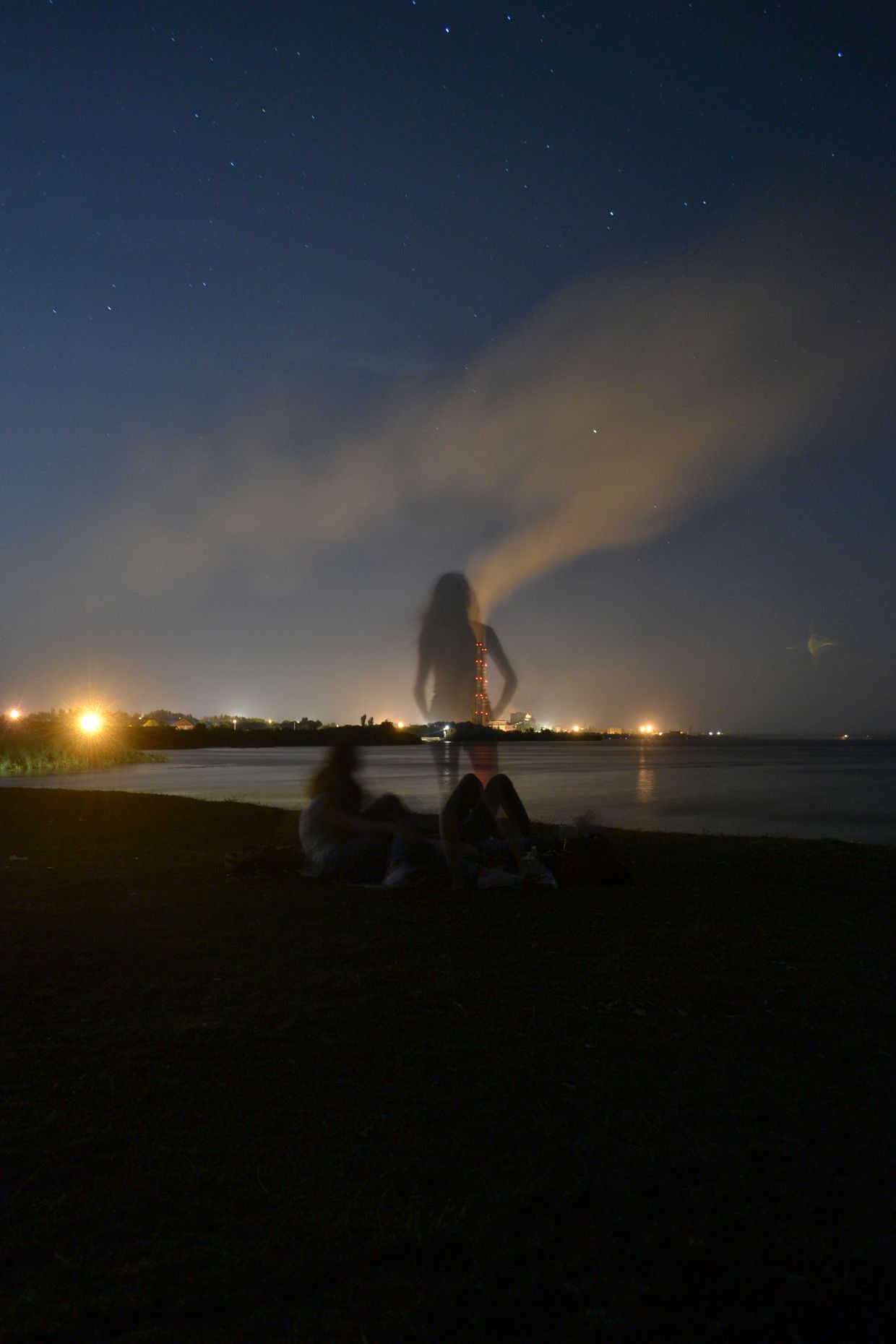
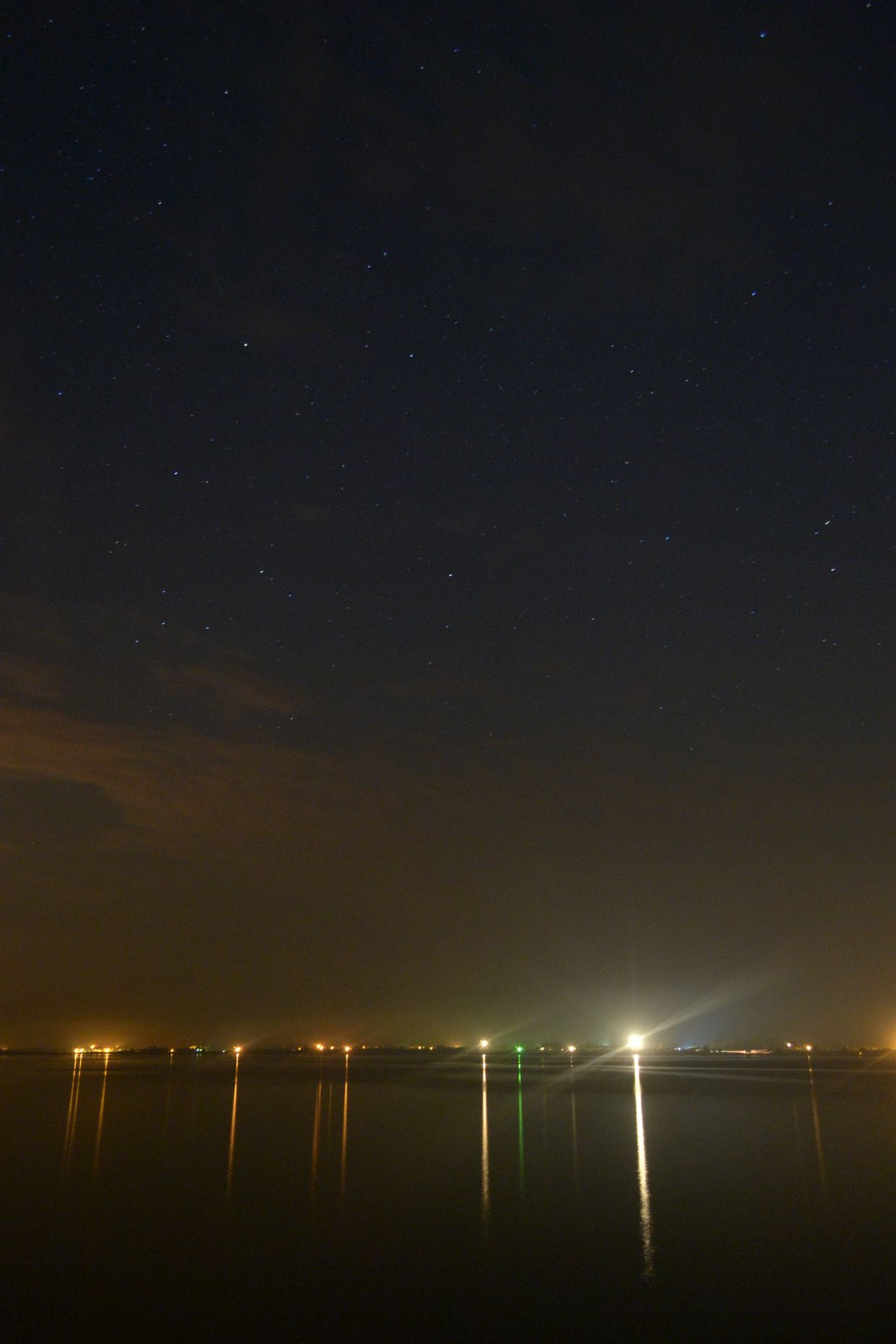
Ivanchenko said that after her classroom survived a Russian attack, she held onto some hope that the school could be rebuilt.
But the last time she was in Kurakhove to visit her parents who have remained in July 2023, the classroom hadn't made it through another Russian attack.
“I don’t have any place now where I could bring my future children and say, your mom spent time here or studied here,” she said.
Niu-York, Donetsk Oblast
A similar strategically important hilltop is located some 50 kilometers east of Kurakhovke in the town of Niu-York, Donetsk Oblast.
The high point offers a 360-degree view of an area that has been a war theater for the last 10 years.
The Russian-occupied city of Horlivka and the road connecting it with Toretsk are visible to the naked eye six kilometers east down the hill. Other occupied or destroyed settlements are also in sight.
The hilltop was an unofficial landfill before a group of young people got together to clean it up in May 2021, said Khrystyna Shevchenko, a local who led the NGO Youth Initiative of Ukrainian Niu-York.
“Coming here to the hilltop, young people understand (the real) a dream of liberating Horlivka as well as a free and independent Ukraine,” Shevchenko told the Kyiv Independent.
The group also worked on efforts to rename the city from its Soviet name Novhorodske to its original name, Niu-York.
German settlers in the 19th century had given the area the name Niu-York after the American city. The Soviets renamed it to sound Russian. Its original name was officially reinstated in July 2021.
The war had been near for years, but this didn’t get in the way of local teenagers from using the hill as a place to party. It was a must-see spot for visitors.
Half of the city’s pre-war population of 24,000 had already fled by the time Russia expanded its invasion in February 2022. The city is now mostly abandoned, Shevchenko said.
The NGO’s 22 members had their meetings at the local Palace of Culture, a sort of community center popular in Soviet times that are still used across Ukraine for a variety of functions and gatherings.
The building now stands in rubble like many other buildings around.
Shevchenko said the stage inside and the arch above it survived, hoping it also could be rebuilt.
"We dream of being able to reconstruct a place where all the local children can come and be together," she said.
Sievierodonetsk, Luhansk Oblast
Before the war, it was a two-hour ride from Niu-York to Sievierodonetsk in Luhansk Oblast. The road goes through the now-destroyed Bakhmut, Soledar, and Klishchiivka along with dozens of other devastated villages.
The industrial city of Sievierodonetsk had served as the regional capital since the 2014 Russian occupation of Luhansk, the region’s official capital. It was attacked on the first day of the full-scale invasion in Feb. 24, 2022.
The day before the start of the full-scale war, Yevhen, who refused to provide his last name for security reasons, took the last pictures of his favorite lake where a decade earlier he had taken his first-ever photograph.
He took his usual route through leafy streets and by the chemical plant in the industrial zone where he would stop for a coffee.
Yevhen said he returned home without any feelings of anxiety that something might happen.
His intuition failed him. Yevhen awoke around 8 a.m. on Feb. 24, 2022 to his mom calling to tell him that Russia invaded Ukraine. Following the call, two loud explosions shook his nine-story apartment building.
“I panicked so hard as I hadn’t heard explosions for eight years. I thought the building would collapse,” Yevhen told the Kyiv Independent.
The explosions were occurring closer to his home every day. The final warning call that it was time to leave was on March 5, 2022 when a barrage of artillery hit his neighborhood. Three days later, his cat, Tymosha, probably saved Yevhen’s life.
Minutes before their apartment was hit, Tymosha’s meows woke up Yevhen. They took shelter and survived an attack that ruined their apartment. After living in a basement for a month, Yevhen fled the area with his mom and Tymosha.
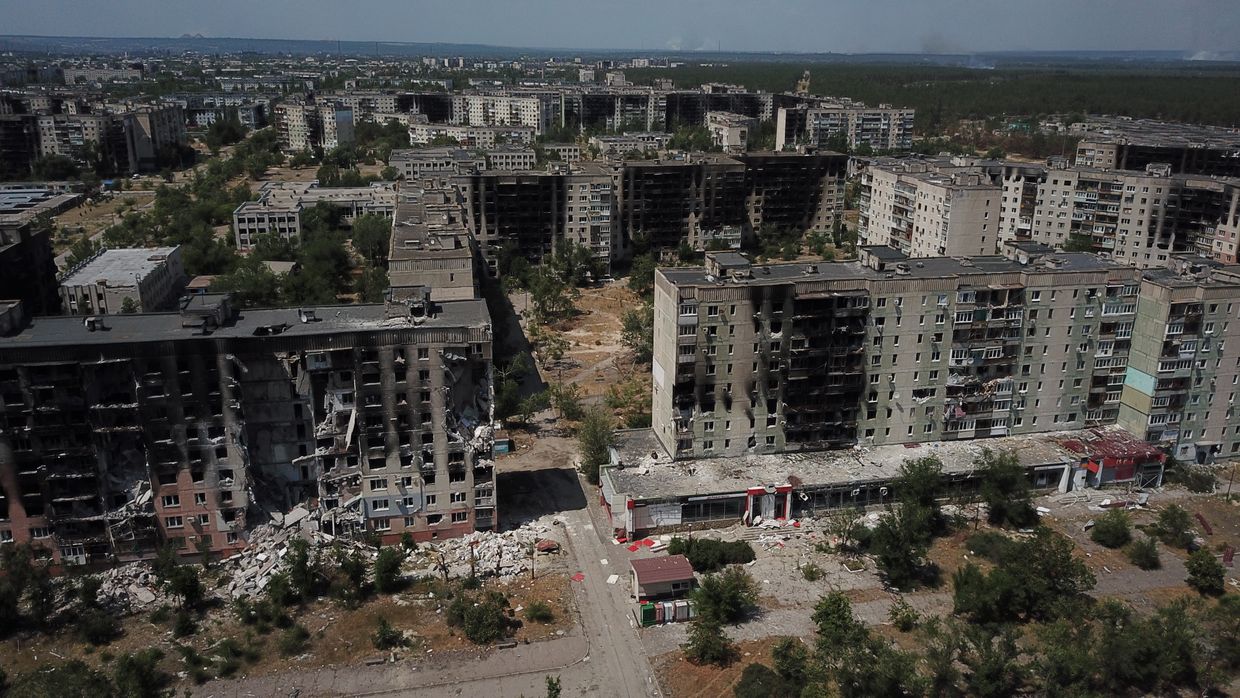
The Battle of Sievierodonetsk quickly turned into fierce urban warfare. Russian forces devastated the city with artillery and guided bombs before it fell under their control in June 2022.
“I watched a video of my apartment building burning. Watching (footage of Sievierodonetsk) I realized that I walked those streets. Now they're gone,” he said barely above a whisper.
Rubizhne, Luhansk Oblast
In neighboring Rubizhne, Oleksiy Artiukh used to start his mornings with breakfast, football programs on TV, and occasionally gazing out the window at the playground below.
He had purchased his apartment a year before the full-scale invasion, planning a future in the developing city surrounded by forests, lakes, and the winding Siverskyi Donets River.
When Russian President Vladimir Putin addressed Russians shortly before the start of the full-scale invasion recognizing the parts of Luhansk and Donetsk oblasts occupied since 2014 as “independent states,” Artiukh knew it was time to leave.

"On Feb. 23, 2022, I came to my parents for the last time to bid farewell," Artiukh told the Kyiv Independent.
It was also the last he saw of his now-late grandmother, with whom he spent a lot of time growing up.
A week after he left, Russian troops launched an assault on Rubizhne and urban warfare ensued. The street outside of his old office had turned into a front line.
Those who remained were left with the grim task of burying their loved ones, killed during the urban warfare and shelling, in makeshift graves right in front of their apartment buildings.
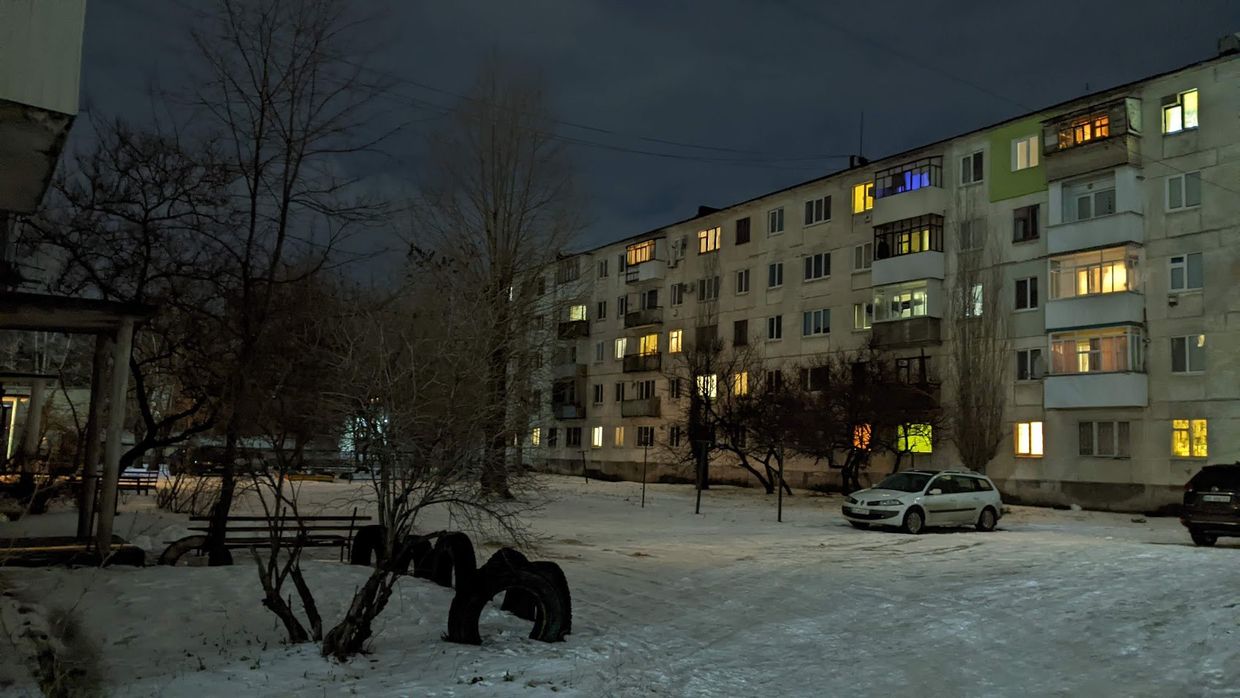
One day, scrolling through Instagram, Artiukh stumbled upon a photo of a playground where his windows once overlooked. The image depicted four makeshift crosses protruding from the ground, accompanied by the caption, "My house is no longer a playground."
"At the moment, there were makeshift graveyards of both adults and children in nearly every yard," Artiukh said.
In mid-May 2022, Russian troops occupied the heavily damaged city following more than two months of intense street fighting.
"Now, only remnants remain of the city. The shops and cafes are gone, destroyed by fire and looting, but the store signs are still hanging," said Artiukh.
Popasna, Luhansk Oblast
Yuliia Kanzeba spent her childhood playing piano and drums at the music school near her home in downtown Popasna, a town in Luhansk Oblast with a pre-war population of 20,000 residents.
“I lived at the music school,” Kanzeba told the Kyiv Independent as she spoke with enthusiasm about classical and rock music.
Russia's war has silenced Popasna’s children from playing music. The shelling sounds orchestrated by the Wagner Orchestra, the self-proclaimed nickname of the notorious mercenary outfit Wagner Group, took over.
The Kremlin-backed Wagner Group reduced every settlement to rubble as they advanced toward Popasna.
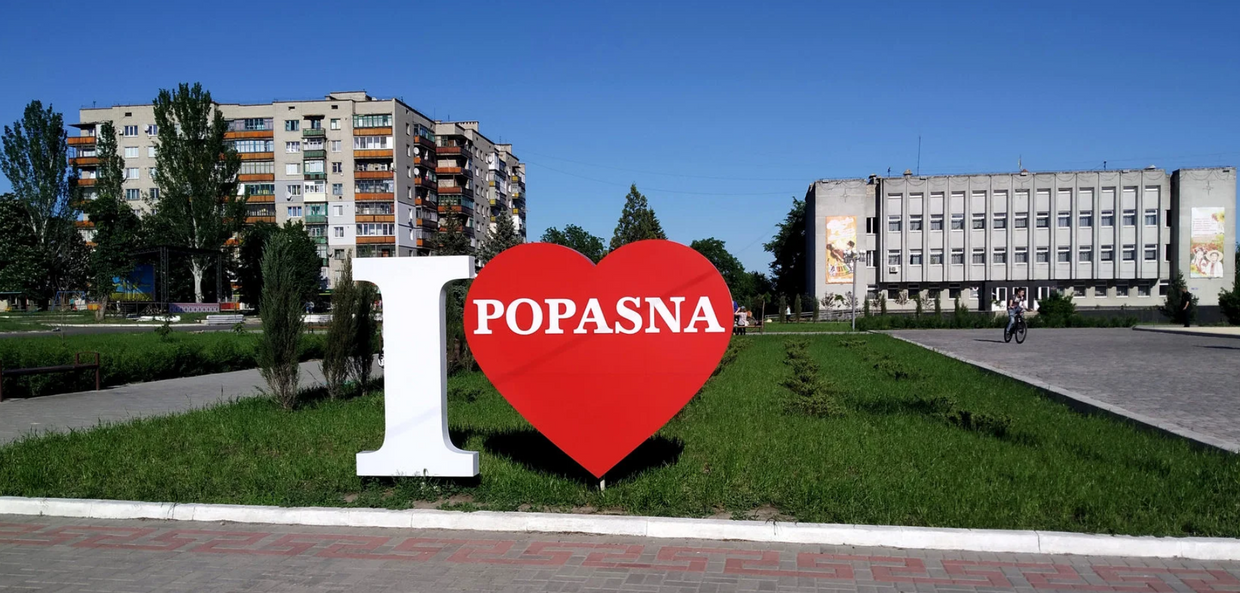

Two months into the Battle of Popasna, the governor reported grim news: No building had survived the onslaught.
The music school was damaged, and part of Kanzeba's five-story residential building crumbled in a Russian air strike.
"My part of the building is still standing. The invincible part," she said.
Kanzeba remembers the memories of her last visit to her family home two weeks before the invasion. Now, she scours Russian propaganda videos, searching for glimpses of her home.
Such footage is rare since the Russian occupying forces are stationed in her building. The idea of it pains her.
When Wagner seized control of the ravaged town in May 2022, Moscow declared it would not rebuild Popasna.
Despite the bleak outlook, Kanzeba wants to return. She said she will go immediately when Popasna is liberated.
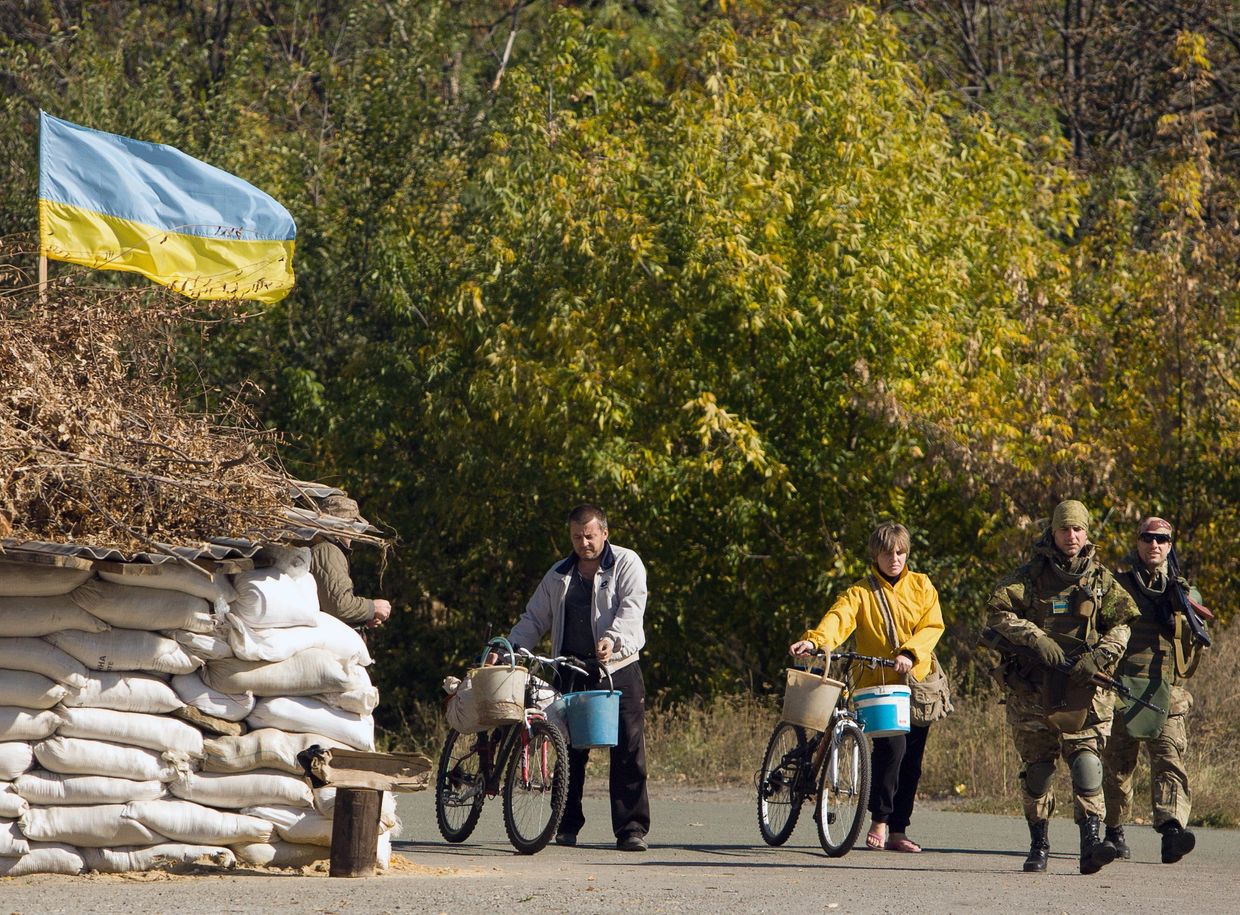
She knows it will be difficult to witness her home, located on Peace Street. "There may be no peace in the city (now), but the street is still there," Kanzeba said.
Russia’s war has destroyed 64 settlements in Luhansk Oblast, equivalent to one-tenth of the region.
“The list shouldn’t be considered final and exhaustive until complete liberation,” Roman Mamedov, regional administration spokesperson, told the Kyiv Independent.
